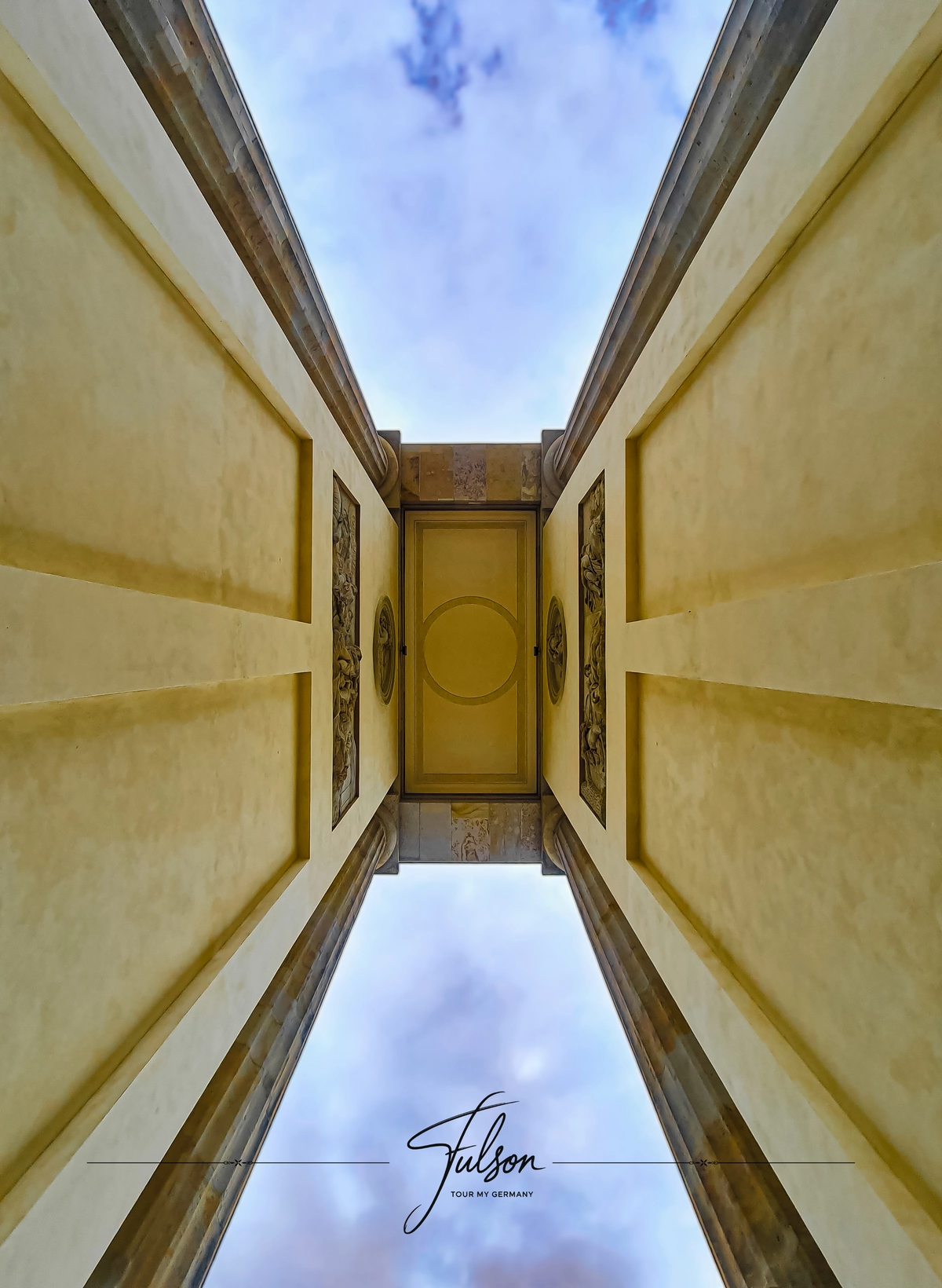- Home
- Top German Cities To Visit
- Berlin Photo Gallery
- Brandenburg Gate
Brandenburg Gate, Berlin: Germany’s Iconic Landmark
By: Eran Fulson / Traveler & Blogger / After 15+ years of travel across North America and Europe, I now help travelers experience Germany beyond the guidebooks with firsthand tips and cultural insights.
About the Photo
As ever, my camera can't seem to stop looking straight up. This striking view of Brandenburg Gate captures the monument from a low-angle view, emphasizing its Neoclassical columns and grand architecture against a dramatic sky.
You wouldn't know it, but I took this photo in the middle of the day—surrounded by hundreds of people walking past. Sure, there were some odd looks, but capturing Brandenburg Gate with no crowds was otherwise impossible.
Built in 1791, the gate has stood as a witness to history, from Napoleon’s triumph to the division and reunification of Berlin.
The Brandenburg Gate is Berlin’s most iconic symbol—a place where history, politics, and art intersect. Standing under its towering columns, you can’t help but feel the weight of history and the resilience of Germany’s capital.
Historical Significance
- Commissioned by King Frederick William II in 1788 and completed in 1791, inspired by the Acropolis of Athens.
- In 1806, Napoleon marched through the gate after his victory over Prussia, even taking the Quadriga statue back to Paris (it was later returned).
- During the Cold War, it stood at the border between East and West Berlin, sealed off for nearly 30 years.
- In 1989, the fall of the Berlin Wall turned Brandenburg Gate into a global symbol of German reunification.
How to Visit Brandenburg Gate
- Location: Pariser Platz, Berlin
- Opening Hours: Open 24/7, always accessible
- Closest Transport: S-Bahn: Brandenburger Tor, U-Bahn: Unter den Linden
- Entry Fee: Free
Tip: Visit early morning or late evening for fewer crowds and the best light for photography.
Want More Famous Berlin Landmarks?
Berlin’s architectural landmarks reflect its dynamic history and innovative spirit.
From the neoclassical grandeur of the Brandenburg Gate to the modern glass dome of the Reichstag, the city blends old and new seamlessly.
The Berlin TV Tower offers panoramic views, while the bold design of the Sony Center showcases contemporary urban planning. Exploring these structures reveals Berlin’s ever-evolving architectural identity.
What does the Brandenburg Gate symbolize?
What does the Brandenburg Gate symbolize?
The Brandenburg Gate symbolizes German unity and resilience. It has represented both division (during the Cold War) and reunification (after 1989), making it one of Germany's most historically significant landmarks.
Can you go inside Brandenburg Gate?
Can you go inside Brandenburg Gate?
No, the Brandenburg Gate is not an enclosed structure, but visitors can walk underneath and around it. The Academy of Arts (Akademie der Künste) nearby offers exhibitions on its history.
What is the statue on top of the Brandenburg Gate?
What is the statue on top of the Brandenburg Gate?
The Quadriga is a chariot drawn by four horses, driven by the goddess Victoria, symbolizing victory. It has a dramatic history, having been taken to Paris by Napoleon in 1806 and later returned to Berlin in 1814.

